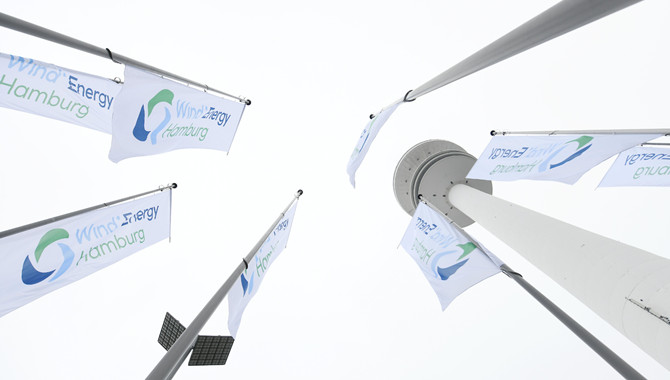The fast growing global wind industry continuously scales up onshore and offshore turbine offerings through incremental innovation as well as more radical out-of-the-box solutions. According WindEurope’s Wind Energy in Europe; 2021 statistics and the outlook for 2022-2026 released this February, the average installed rating was 4MW for new onshore turbines in 2021. The average for new ordered turbines in 2021 reached 4.9MW (+22.5%).
Order intake for new ordered offshore turbines in 2021 grew to 11.2MW compared with 8.5MW for new installed (+31.8%) last year, and slightly higher set against 8.3MW in 2020. A main contributing factor for the latest offshore size leap were 100 14MW Siemens Gamesa SG 14-222 DD turbines in UK waters ordered during the first half of 2021. The latter is currently the highest rated turbine in prototype phase and it features the wind industry’s largest 222-metre rotor.
Important for turbine scale and scaling is not to focus at rating (MW) only, but consider wind conditions too. China is for instance mainly a low-wind typhoon-prone market while the North Sea is a typical high-wind space. Whereby a larger rotor compensates for ’lack of wind’ through greater wind capture. The combination low-wind and typhoon conditions creates additional challenges, as WindEnergy Hamburg exhibitors active in these markets and can explain visitors.
Installation optimizing requires an optimal specific ratio between turbine rating and rotor swept area, like 13MW and 220m rotor for high-wind versus 13MW and 245m with low-wind.
OEM’s and specialized engineering consultancies like for example AEROVIDE and Bewind can explain visitors on various concepts and their views optimal turbine configuring.
Offshore wind
Offshore turbine size has since the world’s first 1991 windfarm with 11 450kW turbines grown until the latest 14-16MW+ class. The successful 6MW Siemens (Gamesa) and 8MW (MHI) Vestas turbine platforms introduced in 2011/12 were followed by gradual incremental scaling steps in the years that followed. However, this pattern got disrupted when GE Vernova in 2018 introduced the 12MW Haliade-X direct drive turbine with 220-metre rotor.
This in turn sparked off multiple ‘catching-up’ competitor initiatives. Vestas in this highly dynamic market environment this year installs a 15MW medium-speed prototype with 236-metre rotor diameter, and Siemens Gamesa comes with a 14MW direct drive prototype offering same rotor size.
Beyond current scale
Other wind industry parties are already looking beyond that scale. A Dutch technology institute predicted early this year that 27MW horizontal axis turbines to become ‘the norm in 2040’ with blades around 145m long and an estimated 297m rotor size. Danish developer Ørsted made 2021 headlines with an environmental impact assessment for a Swedish windfarm featuring 55x 27MW, ‘up to 320m rotor diameter’ and ‘late 2020’s commissioning.
Vessel designer and operator views
Leading marine engineering consultancy’s like GustoMSC, and installation firms including WindEnergy Hamburg exhibitors Van Oord, Jan de Nul and DEME Offshore will each add to future turbine-size outlook. Their latest mega-class Jack-up designs in various development phases aim at installing 20MW+ turbines with corresponding estimated 275-290m rotors.
Future offshore turbine scale is not limited to single-rotor concepts as demonstrated by different multi-rotor floating concepts developments, with an inherent benefit much faster scaling potential like 32MW composed of two 16MW turbines.
Onshore wind
Modern onshore turbine size has grown from a humble 10-15kW during the late 1970’s, to latest 5.5-7MW+ flagship offerings with up to 172m+ rotors for markets outside China. But some Chinese suppliers already offer models with rotors in the 180-190m+ range, LCOE-optimized solutions for low-wind plus the challenging ‘end-of-subsidy’ market environment.
The end of onshore turbine scaling has been predicted many times, with especially road transportation of single-piece blades a critical factor. Today 84 - 85-metre blades can still be transported in most developed markets, due to parallel advancement of road transportation tools and methods. However, a switch towards segmented blades might at some stage become unavoidable. Spanish company Nabrawind for instance offers already its Nabrajoint modular blade solution.
Other potential limits to onshore scaling are permitting restrictions for hub and/or tip height, transport-logistical and installation challenges for nacelles (and towers). Self-climbing cranes will be shown for instance by Spanish WindEnergy Hamburg exhibitor HWS, while Enercon uses its own crane solution for installing turbines with modular steel tower system.
Drivetrains
Unlike direct drive and medium-speed geared drive systems dominating the offshore segment, remains for onshore high-speed non-integrated geared (still) a popular choice. Onshore medium-speed geared was pioneered by WindEnergy Hamburg exhibitors AEROVIDE, aerodyn-engineering and Vestas. Other exhibitors specialised in geared drivetrain technology include Eickhoff, Winergy (Flender) and ZF Wind Power. Enercon pursues in-house direct drive solutions.
If and/or when onshore turbine scaling will first hit either technical, transport-logistical, permitting, economical and/or other limits in future remains hard to predict.
The opinions expressed herein are the author's and not necessarily those of The Xinde Marine News.
Please Contact Us at:
media@xindemarine.com


 Ningbo Containerized Freight Index Weekly Commentar
Ningbo Containerized Freight Index Weekly Commentar  Ningbo Containerized Freight Index Weekly Commentar
Ningbo Containerized Freight Index Weekly Commentar  Ningbo Containerized Freight Index Weekly Commentar
Ningbo Containerized Freight Index Weekly Commentar  BIMCO Shipping Number of the Week: Bulker newbuildi
BIMCO Shipping Number of the Week: Bulker newbuildi  Ningbo Containerized Freight Index Weekly Commentar
Ningbo Containerized Freight Index Weekly Commentar  Ningbo Containerized Freight Index Weekly Commentar
Ningbo Containerized Freight Index Weekly Commentar